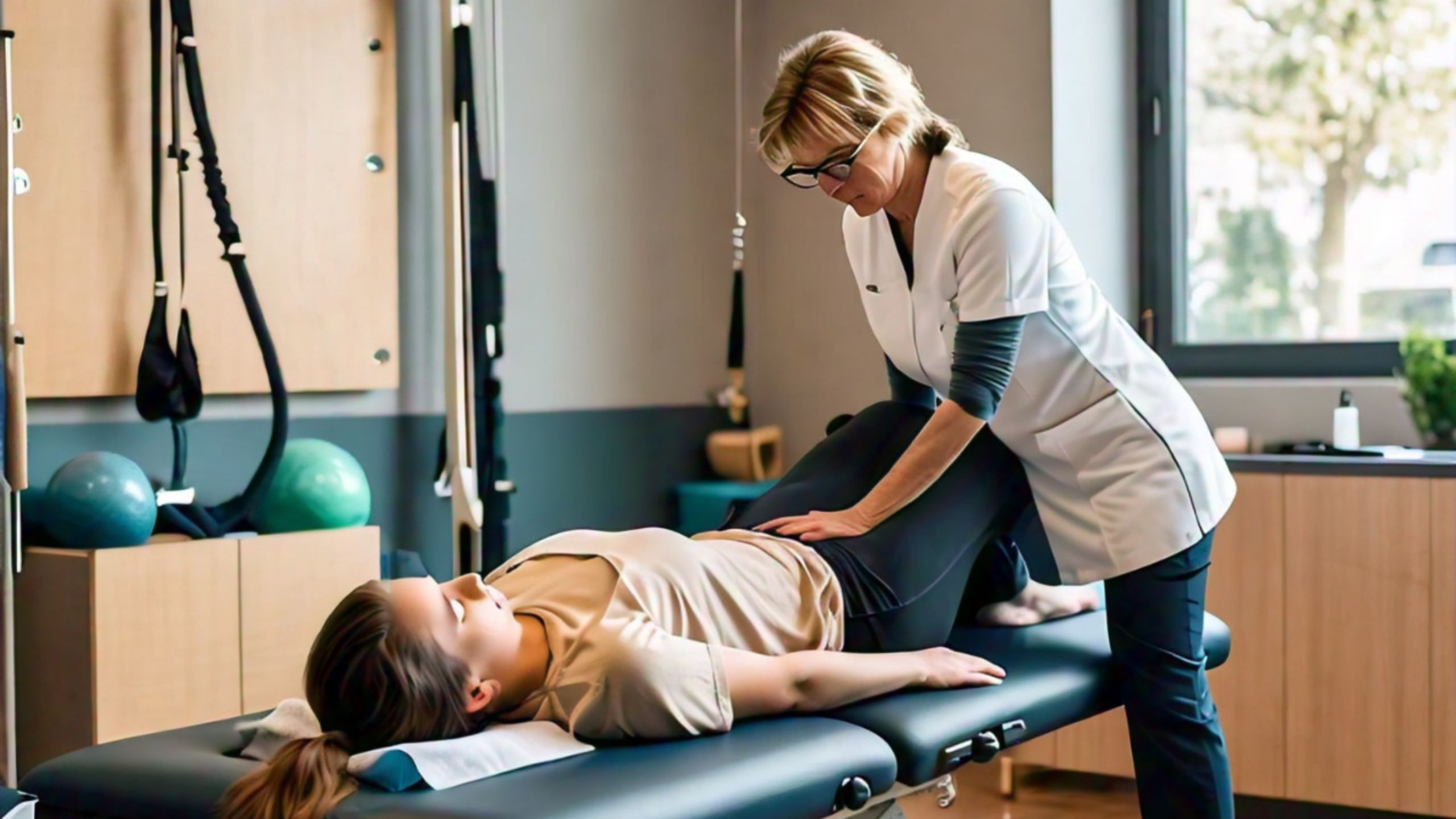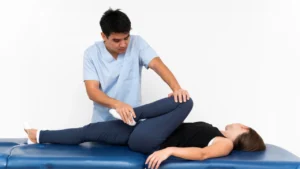The spine is a crucial structure in the human body, providing support, mobility, and protection for the spinal cord. Among its various components, the ligaments play an essential role in maintaining stability and allowing movement. The anterior longitudinal ligament (ALL) is one such ligament, crucial for spinal health. Understanding the causes, symptoms, and treatments related to the ALL can help in preventing and managing injuries effectively. If you’re experiencing issues with your ALL, seeking out the best physiotherapist in Garia can be a critical step in your recovery.
Anatomy of the Anterior Longitudinal Ligament
The anterior longitudinal ligament is a strong band of connective tissue that runs along the front (anterior) of the vertebral bodies, extending from the base of the skull to the sacrum at the lower end of the spine. It is thick and broad, attaching to the vertebrae and the intervertebral discs, helping to prevent excessive backward bending (hyperextension) of the spine. This ligament plays a vital role in maintaining spinal stability and protecting the spine from injuries.
Causes of Anterior Longitudinal Ligament Injury
Injuries to the anterior longitudinal ligament can occur due to several reasons, often involving trauma or overuse.
- Traumatic Injuries: Sudden impacts, such as those experienced in car accidents or falls, can cause hyperextension of the spine, leading to injury of the ALL.
- Overextension: Repeated overextension of the spine, often seen in athletes or those involved in activities that require bending backward, can strain and eventually injure the ligament.
- Degenerative Conditions: As we age, the spine undergoes wear and tear. Conditions like spondylosis or osteoarthritis can weaken the ligament, making it more susceptible to injury.
- Sports-Related Injuries: High-impact sports or those requiring significant spinal extension, such as gymnastics or weightlifting, increase the risk of ALL injuries.
- Poor Posture: Chronic poor posture, especially when combined with repetitive strain, can contribute to the gradual weakening of the ALL, leading to injury.
Risk Factors
Several factors can increase the risk of anterior longitudinal ligament injuries:
- Age: As the spine degenerates with age, the ALL becomes more prone to injury.
- High-Risk Activities: Engaging in sports or activities that involve significant spinal movement increases the risk.
- Pre-existing Conditions: Conditions like spinal stenosis or herniated discs can make the ligament more vulnerable.
- Occupational Hazards: Jobs that require heavy lifting or prolonged periods of bending can increase the likelihood of injury.
Symptoms of Anterior Longitudinal Ligament Injury
Symptoms of an ALL injury can vary depending on the severity of the injury. Common signs include:
- Acute Pain: Sudden and sharp pain in the lower back or neck, often following an incident of trauma or overextension.
- Chronic Pain: Persistent pain that may worsen with specific movements, particularly those involving backward bending.
- Stiffness and Limited Mobility: Difficulty moving the spine, especially in extension.
- Swelling and Inflammation: The injured area may become swollen and tender to the touch.
- Muscle Spasms and Weakness: Muscle spasms around the injury site, sometimes accompanied by weakness in nearby muscles.
- Radiating Pain: In some cases, pain may radiate to the legs or arms, depending on the injury’s location and severity.
Diagnosis
Diagnosing an ALL injury typically involves:
- Physical Examination: A healthcare provider will assess the patient’s range of motion, pain levels, and any visible signs of injury.
- Imaging Techniques: X-rays, MRIs, or CT scans may be used to visualize the ligament and identify any damage.
- Range of Motion Tests: These tests help in assessing the extent of movement impairment.
- Differential Diagnosis: It is crucial to rule out other conditions that might mimic the symptoms of an ALL injury, such as herniated discs or spinal fractures.
Conservative Treatment Options
Most ALL injuries can be managed with conservative treatments:
- Rest and Activity Modification: Reducing activities that strain the spine is essential for recovery.
- Physical Therapy: A targeted exercise program can help strengthen the muscles around the spine and improve flexibility, aiding recovery. If you’re in the Garia area, finding the best physiotherapist in Garia can significantly enhance your rehabilitation process and ensure you’re on the right path to recovery.
- Pain Management: Nonsteroidal anti-inflammatory drugs (NSAIDs) and muscle relaxants can help alleviate pain and reduce inflammation.
- Supportive Devices: Wearing braces or orthotics can provide additional support to the spine during recovery.
- Hot and Cold Therapy: Alternating between heat and cold packs can reduce inflammation and relieve pain.
Surgical Treatment Options
In severe cases where conservative treatments fail, surgery might be necessary:
- Indications for Surgery: Surgery is usually considered when there is significant ligament damage, instability in the spine, or when conservative treatments are ineffective.
- Types of Surgical Procedures: Depending on the injury, procedures might include spinal fusion, where two or more vertebrae are permanently connected, or ligament repair to restore stability.
- Risks and Benefits: Surgery carries risks like infection, blood clots, or nerve damage, but it can provide significant relief and restore function.
- Post-Surgical Rehabilitation: Recovery from surgery often involves physical therapy to regain strength and flexibility.
Preventive Measures
Prevention is key to avoiding ALL injuries:
- Proper Posture: Maintaining good posture, especially during activities that strain the spine, is crucial.
- Strengthening Exercises: Regular exercises that target the core and spinal muscles can provide added support to the spine.
- Safe Practices in High-Risk Activities: Using proper techniques and safety gear during sports or heavy lifting can reduce injury risk.
- Regular Check-ups: Routine visits to a healthcare provider can help catch early signs of degeneration or strain.
Lifestyle Adjustments
Making lifestyle changes can help in both preventing and managing ALL injuries:
- Healthy Weight Maintenance: Excess weight can strain the spine, so maintaining a healthy weight is essential.
- Regular, Low-Impact Exercise: Activities like swimming or walking can strengthen the spine without putting excessive stress on it.
- Avoiding Smoking and Excessive Alcohol: Both can negatively impact bone and ligament health.
- Ergonomic Workspaces: Adjusting workspaces to reduce strain on the spine can prevent injuries.
Long-Term Management and Outlook
For those who have suffered an ALL injury:
- Chronic Symptom Management: Ongoing physical therapy and lifestyle adjustments can help manage chronic pain.
- Preventing Re-injury: Continued exercise and mindfulness of posture can reduce the risk of re-injury.
- Prognosis: With proper treatment, most people can recover fully, though severe injuries may require ongoing management.
When to Seek Medical Attention
It’s important to recognize when an ALL injury requires medical intervention:
- Severe Pain: Intense pain that does not improve with rest or over-the-counter medications.
- Numbness or Weakness: Any signs of nerve involvement, such as numbness or weakness, require immediate attention.
- Difficulty Moving: If you experience significant difficulty moving or performing daily activities, consult a healthcare provider.
Alternative and Complementary Therapies
Some people find relief through alternative treatments:
- Acupuncture and Chiropractic Care: These therapies can provide pain relief and improve spinal alignment.
- Massage Therapy and Yoga: These can help in relaxing tense muscles and improving flexibility.
- Herbal Remedies and Supplements: Certain supplements may support ligament health, though evidence varies.
- Efficacy of Treatments: It’s essential to consult with a healthcare provider before starting any alternative therapies to ensure they complement your treatment plan.
Conclusion
The anterior longitudinal ligament plays a critical role in spinal health, providing stability and preventing excessive movement. Understanding the causes, symptoms, and treatment options for ALL injuries is essential for maintaining a healthy spine. Early diagnosis and appropriate treatment can lead to a full recovery, while preventive measures and lifestyle adjustments can help protect this vital ligament in the long term. If you’re experiencing symptoms of an ALL injury, seeking medical advice promptly is crucial to prevent complications and ensure proper healing. Consulting the best physiotherapist in Garia, Kamalika’s Physiotherapy, can be a significant step in your recovery journey, ensuring you receive the best care possible.
FAQs
The ALL stabilizes the spine by preventing excessive backward bending.
Mild injuries may heal with rest and conservative treatment, but severe cases might require medical intervention.
Recovery time varies, ranging from a few weeks for mild injuries to several months for severe cases.
Untreated injuries can lead to chronic pain, reduced mobility, and potential spinal instability.
Yes, exercises focusing on core strengthening and spinal flexibility can help prevent injuries.



